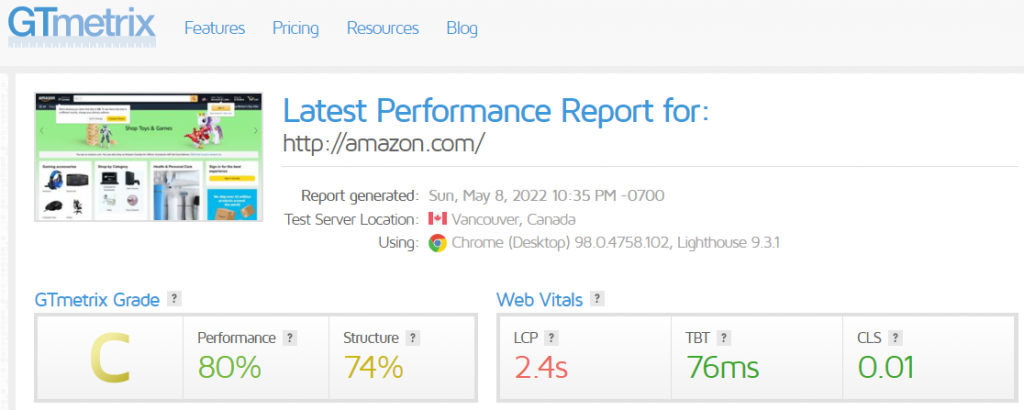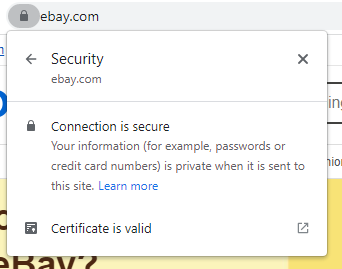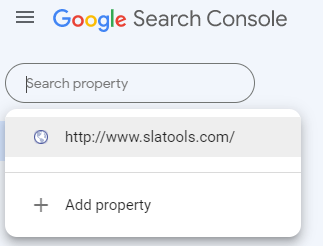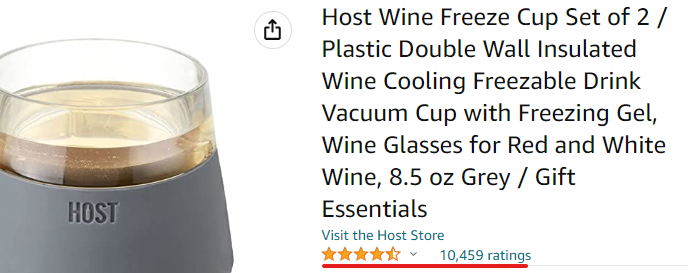
If you plan to launch your own eCommerce marketplace like Amazon, eBay, or Etsy, this article is for you.
This SEO for marketplaces guide will share some of the best tips to improve your marketplace website rankings in the search engine result pages.
Before I share the best SEO tactics for eCommerce multi-vendor sites, let's first understand how a marketplace works and why an eCommerce site must leverage SEO to boost its online presence.
Let's begin!
What is a Marketplace?
A marketplace is an eCommerce website that lists and sells products uploaded by third-party vendors.
It is a platform that brings the buyers and sellers together. Shoppers can find and compare a wide range of products, while sellers can sell their products to a large group of buyers.

Image source: Webkul
Some of the best examples of marketplaces with huge inventories are Amazon, eBay, Etsy, AliExpress, Shopee, and Rakuten.
What is the Difference Between a Marketplace and an eCommerce Website?
A marketplace is different from an eCommerce website because the former sells products uploaded by third-party vendors while the latter sells its own products.
Here are some significant differences between a marketplace and an eCommerce website:
- The term "ecommerce" refers to a platform designed for a single seller, while the marketplace platform can have more than one seller.
- An eCommerce website deals with a limited number of products, whereas a marketplace has a vast inventory of items uploaded by a large number of vendors.
- An eCommerce website is simple in terms of design and operation compared to a marketplace.
- The margins on every sale are lower in marketplaces, whereas eCommerce stores earn a good percentage of profits from every sale. Therefore marketplaces must sell more items to make more profits.
Why is SEO for Marketplaces Important?
SEO is crucial for online marketplaces because it helps drive relevant organic traffic leading to higher conversions and profits.

Here are the top reasons why SEO is essential for multi-vendor eCommerce sites:
- Improves Organic Search Traffic: Studies show that around 96% of searchers do not trust ads. Inbound marketing via SEO is the best way to acquire online traffic and attract visitors, vendors, and customers to online marketplaces.
- Establishes Authority and Trust: SEO helps to raise the authority of your domain. Higher authority leads to improved organic rankings leading to more traffic. Searchers take higher organic rankings positively, and they prefer to buy from marketplaces that rank higher for relevant product searches.
- Enhances User Experience: SEO helps marketplaces enhance the user experience by optimizing the website. When you partner with any SEO agency or start doing SEO yourself, you perform several activities to improve your website's speed, engagement, and readability. Improved UX leads to more sales.
- Produces Long-Term Results: In contrast to a short-term marketing strategy, which typically offers an immediate or one-time result, SEO produces long-term results. You start seeing the results in a few weeks, and regular SEO work continues to raise your online store's organic traffic, conversions, and profits.
Challenges of SEO for Marketplaces vs eCommerce Websites
As compared to an eCommerce webmaster, marketplace owners face several SEO challenges.
For an eCommerce site, it is easier to manage SEO because there are fewer products. You have complete control of your products and inventory, so optimizing your product pages is uncomplicated.
However, since marketplaces have hundreds of vendors and thousands of products, performing SEO on every product page is time-consuming and challenging.

Besides, marketplace owners have to manage many vendors to ensure they are on top of their inventory and shipping. The onboarding process should be smooth, and vendor registration and product management should be easy.
Moreover, vendors often upload the same product description multiple times or create the same URL structure for several products, confusing the users. There should be constant monitoring of the uploaded products to keep them SEO-friendly.
Best SEO Tips for Marketplaces
Now, we are into the most exciting part of this SEO marketplace tutorial, where we will discuss some of the finest SEO tricks to boost the online visibility of your eCommerce marketplace store.
Here are some of the best SEO tips for online marketplaces:
Optimize Breadcrumbs
Breadcrumbs are an essential element of every website that assists in navigation.
In addition, breadcrumbs also improve an online store's user experience and crawlability by displaying the complete product path to the users.
Visitors know exactly under which category and subcategory the product they are viewing is located.
Here is an example of a breadcrumb from Newegg:

The entire product path is shown, and visitors can clearly see that Gaming Desktops are located under the Computer Systems category.
Breadcrumbs also help the search engines locate the correct category or subcategory for various products, improving the relevance score for different product pages.
Moreover, Google also displays breadcrumbs in the SERP to show users where the page is located on your website.
Here is an example of a breadcrumb in the search result:

Additionally, Google Search Console offers a breadcrumbs report that you can find under the Enhancements section, as shown in the image below.
In this report, you can check any errors in your breadcrumbs and locate all the valid breadcrumb URLs.
Therefore, you should always use breadcrumbs on your website because they are a vital element of marketplace SEO.
Use Schema Markup
Schema markup is a language used by search engines to understand the information contained in a webpage.
Besides, schema data also helps to improve the indexing of websites in the search results and allows marketplaces to display additional product information via rich snippets.
You can show information like reviews, ratings, product details, and breadcrumbs in the SERP via schema markups.
For a marketplace, having proper schema markup is crucial to improve product visibility in the search results.
A marketplace website can use several types of schema, but the most important of all is the product structured data.
Product markup can be used to display different product properties, such as
- Image
- Product Name
- Reviews (aggregateRating)
- Brand Name
- Product Description
- SKU, etc
Here is what the product schema markup looks like in the search results:

For more help on adding the product schema codes to your website, you can visit this resource from Google.
Product schemas can help you beat your competitors by improving your product CTR (Clickthrough rate).
Ensure the Website Loads Fast and is Responsive
Speed is crucial in terms of user experience because people hate slow websites.
Around 79% of buyers admit that slow loading can impact their willingness to buy the product.
Moreover, slow sites lead to a 4.42% drop in conversion rates.
Google also uses page speed as one of the ranking factors. The Page Experience Search Update focuses on user experience metrics such as site loading speed and bounce rate.
A faster marketplace site can undoubtedly bring more users and sales.
You can check your site speed using Google PageSpeed Insights, GTmetrix, and Pingdom.

If your page speed is slow, then you can use these page optimization tactics to improve speed:
- Select a good web hosting provider as your hosting plays a vital role in loading the site faster. You should go with dedicated web hosting for marketplaces, and they offer maximum uptime and performance.
- Compress all the images on your store using tools like Tiny PNG, Compressor.io, and Ezgif. Image compression will boost the site speed comprehensively.
- Use a CDN (Content Delivery Network) as it helps to cache content in multiple locations and serves the content from the visitor’s nearest location.
- Use a responsive website because mobile-friendly websites load faster on mobile devices and improve user experience.
- Reduce external HTTP requests as more requests have a higher page load speed since a marketplace site contains multiple components like CSS, JavaScript, images, and video embeds. Therefore, reducing the number of HTTP requests can significantly improve the site speed.
Make Site Security a Priority with SSL
SSL stands for Secure Sockets Layer. It is a security protocol that creates an encrypted link between a web server and a web browser.
When you secure your website with SSL, HTTPS appears in the URL as shown in the below image:

Google uses HTTPS as a ranking signal, so keeping your marketplace SSL secured is necessary.
SSL keeps all the user data secured and prevents any security breaches.
Therefore, you should add SSL to your site to keep user data secure and improve SEO.
Some of the top SSL providers to create and install an SSL certificate on your marketplace are GeoTrust, Comodo, and GoDaddy.
Use Proper Sitemaps
A marketplace site has thousands of pages that need to be updated frequently to display users the latest product information.
A sitemap is handy for proper indexing of your target landing pages. Having a sitemap tells search engines which pages to index and what should be the frequency of indexing.
You can create a sitemap manually or use a service like XML Sitemaps.
After creating a sitemap, you should upload it to Google Search Console.
Uploading the sitemap to Search Console ensures all your target landing pages get properly indexed and display updated information in the search results.
Open Search Console and select your property/domain to submit a sitemap.

Now, you can see the status of your sitemap and the total number of discovered URLs.
You should update your sitemap wherever you add new URLs to your website or revise the content of existing URLs.
Use Ratings and Reviews to Increase Customer Engagement
Ratings and reviews help increase customer engagement and encourage users to buy a product.
An excellent example of a marketplace website having ratings and reviews is Amazon.
Here is an example of a product page from Amazon having ratings and reviews from thousands of buyers.

Reviews make it easy for buyers to make a buying decision. It also boosts customer engagement.
Send regular emails to your customers who have purchased a product but didn’t leave a review.
Make it easy for users to leave reviews on your site and use different tactics to encourage your customers to review your products.
Reviews are a solid signal to Google that your site is trustworthy. Hence, you should always take proper steps to attract user reviews on all your products.
Make Content Marketing a Priority
Content marketing is a crucial part of search engine optimization.
Preparing high-quality, relevant, and unique content will help you reach your buyers at different customer journey stages.
Here are some of the best ways to use content marketing to improve your marketplace SEO:
- Create a content hub and share articles related to specific topics to assist buyers during crucial customer journey stages.
- Leverage the power of influencers to share your products on different social channels. This will encourage people to join your website, and both sellers and buyers will be attracted to your brand.
- Add unique and SEO-friendly content to all your product pages. Use LSI keywords to increase the relevance score of your target keyphrases.
- Build product buying guides and service guides for your customers because they are beneficial for both new and repeat buyers.
- Create infographics and videos because people love them. Around 65% of brands use infographics to improve their content marketing efforts. Besides, adding product videos is a great way to decrease the bounce rate and increase time on the page.
- Share customer stories on your social channels and your blog. Success stories are a great way to attract more customers to your marketplace. Share the success stories of vendors and buyers because you should target both as a marketplace owner.
Conclusion
SEO is crucial for marketplace websites because it helps the product and category pages rank higher in the search results, resulting in increased organic traffic and revenue.
Follow the SEO tips for marketplaces discussed in this article to improve your marketplace presence in SERP.










